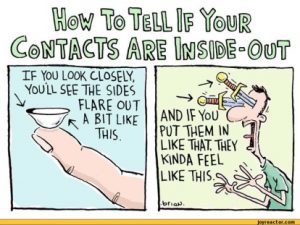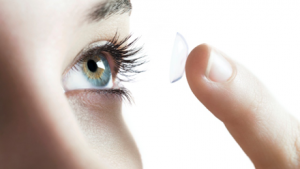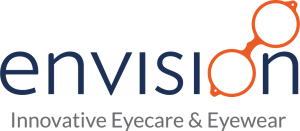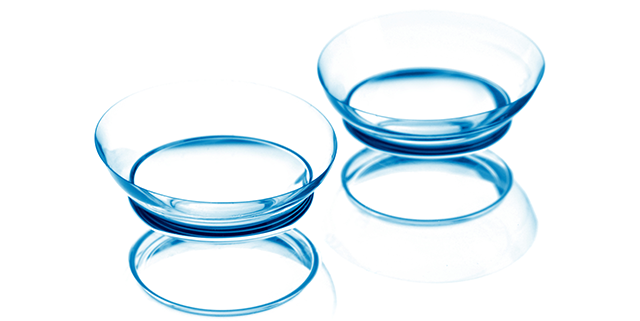Innovations in Contact Lens Technology
Innovations in Contact Lens Technology
Contact lenses are medical devices that can improve vision, add convenience to activities, and bandage an injury to improve comfort and aid healing. It is very important to have a contact lens evaluation to make sure your eyes are healthy enough to wear them comfortably without damaging the ocular surface, and to ensure the contact fits your eye properly. There have been many advances in contact lens technology over the last decade to enhance comfort, breathability and vision demands. We will discuss the different types and modalities of contact lens, wear time schedules, and the benefits of utilizing new technology to expand the demographic of eligible contact lens candidates.
 The majority of contact lens wearers are in soft contact lenses. These lenses are available in daily disposable, 2 week disposable, and 1 month
The majority of contact lens wearers are in soft contact lenses. These lenses are available in daily disposable, 2 week disposable, and 1 month
disposable wear schedule regimens. Daily disposables are the healthiest option with improved convenience and comfort. The cost difference is negligible when the consideration of solution cost is no longer needed with daily disposables. Also, the packaging is recyclable, except the foil.
When the eye is not completely round and has an oval curvature, it is termed astigmatism. In order to correct astigmatism with contacts, we must use a toric contact that is larger in diameter and must be orientated properly to provide adequate vision. Different designs of toric lenses are available for different shapes of the eye to provide the best vision and comfort.
Hard contacts are usually indicated for irregular corneal shapes and can be initially uncomfortable. For those who find hard lenses unbearable, a blended(soft and hard) contact or scleral contact lens can be a valuable alternative to treat corneal diseases that cause irregularity.
As we age, the ability to see up close slowly diminishes and a different modality of contact lenses are necessary. Three main choices are multifocals, monovision and distance vision only with readers over the contacts as needed for near vision tasks. Multifocals are the best option to try first because it provides seamless vision from distance to near, but is pupil size dependent so these do not work perfectly for everyone. Monovision is when we fit the dominant eye for distance and the non-dominant eye for reading. This seems like it would create imbalance or eye strain, but works very well for the majority of people who are not comfortable with multifocals. These two modalities can be modified and used in combination dependent on patient visual demand. If neither of these options is adequate, correcting the distance vision with the use of readers
over the contacts is a last resort.
Ortho-keratology is the science of using hard contacts during sleeping hours to gently change the curvature of the eye  overnight, so no correction is needed during the day. The initial comfort is sometimes an issue, but improves over time. This has been implicated in reducing the progression of nearsightedness in the adolescence.
overnight, so no correction is needed during the day. The initial comfort is sometimes an issue, but improves over time. This has been implicated in reducing the progression of nearsightedness in the adolescence.
Newer innovations in contacts have become exciting for other demographics as well. A brand new lenses has been released specifically geared for the avid device user to reduce computer fatigue and enhance performance. Also, bluetooth technology incorporated in the contact is on the horizon to monitor eye pressure and blood glucose, in order to better manage glaucoma and diabetes.



